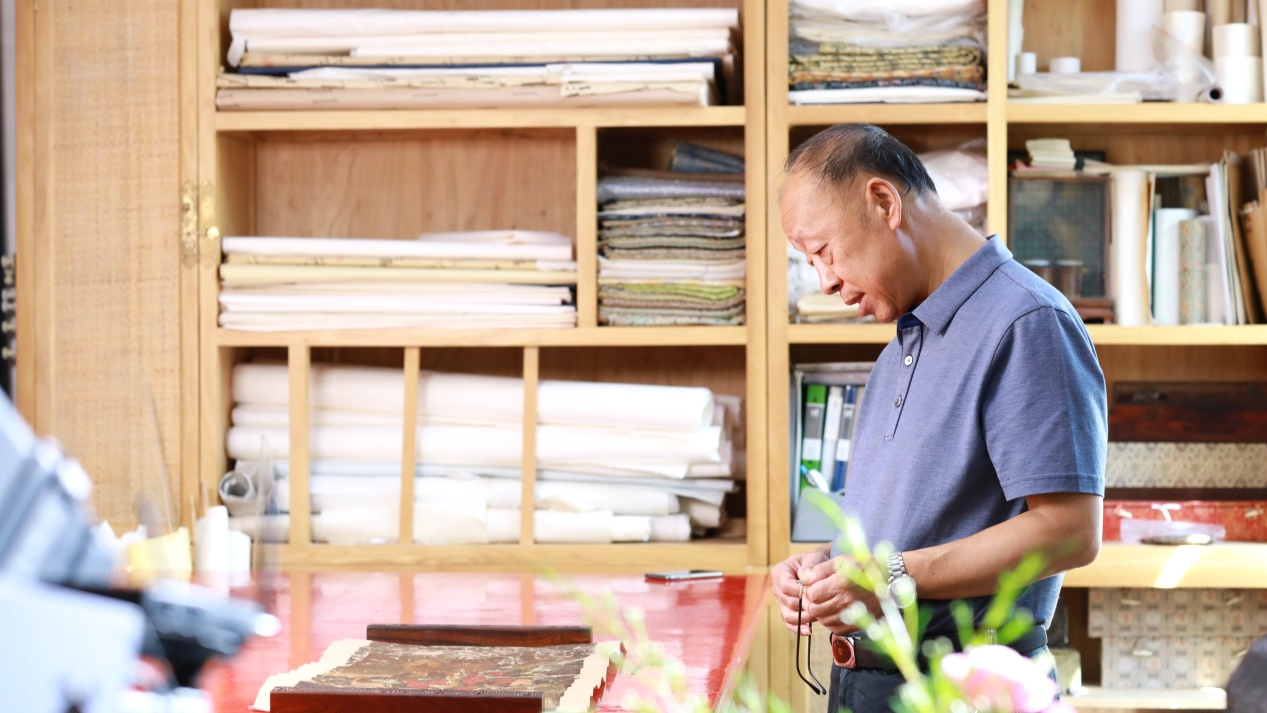04:13

My name is Zhang Xuguang and I started preserving cultural relics in 1980. I began working for the Beijing's Palace Museum in 1986. So I have been in this business for 33 years.
From the generation of my father, who started working for the Palace Museum in 1954, till my retirement, that's two generations, 64 years in total at the Palace Museum. My brother and sisters worked in the Palace Museum to restore ancient paintings and calligraphy before me.
For the next generation, I have a nephew at the University of Michigan in the United States, who is also engaged in painting and repair work.

Chinese relics restorer Zhang Xuguang is working in the Palace Museum in Beijing, China. /CGTN Photo
Chinese relics restorer Zhang Xuguang is working in the Palace Museum in Beijing, China. /CGTN Photo
I personally like handicrafts. I have an obsession, thinking that because they are handed down from the older generations, we have an obligation to pass them on. An old Chinese saying says that people who repair painting and calligraphy works are like doctors who are dedicated to prolonging the lives of ancient works.
Calligraphy and painting restoration involves more than 20 steps, including cleaning the core, moving the core, removing the core, painting, and framing. It takes from five days to a week, because the process is complicated.

Chinese relics restorer Zhang Xuguang is working in the Palace Museum in Beijing, China. /CGTN Photo
Chinese relics restorer Zhang Xuguang is working in the Palace Museum in Beijing, China. /CGTN Photo
For my generation, we mostly had middle school or high school education. Now, the young people here have at least a bachelor's degree or above, most of them even have graduate degrees. With the education level, it's not the same as the past, and the concepts are also different.
In the past, no one thought we could be recognized by society. We just kept at it quietly, especially the generations before us. Nobody knows who they were, unless someone in the system knows them, the society does not know anything about them. For my generation, people began to pay more attention to this industry because of promotions.
To work as a restorer, only knowing about the business is not enough. First, someone has to like the business. It doesn't depend on the level of education, but on ingenuity. This cannot be learned from books — only by learning from the teacher's hands can someone learn something real. Because we mainly rely on our hands, handicraft is the art of the hand. So apprenticeship is the best way.
Since it is a Chinese traditional handicraft, if no one learns it, it will fade away in future. In the past, teachers only taught apprentices some of their skills, not all of them. But doing it this way, the traditional techniques cannot be fully preserved. So when I teach my students, I tell them everything I know so we can pass on the traditional handicrafts for the benefit of future generations.
Since we have entered the field of restoring cultural relics, we should first be responsible for it, and be in awe of the relics and our ancestors. We do our best in order to let future generations see these things.